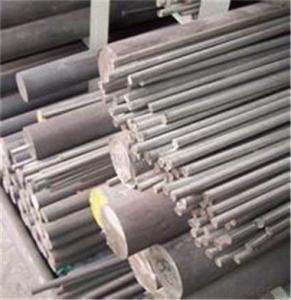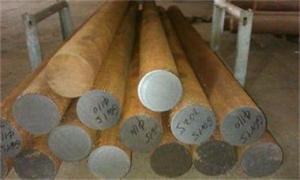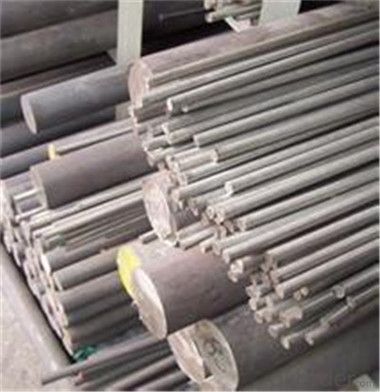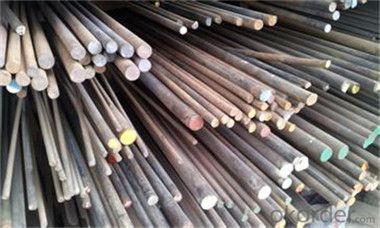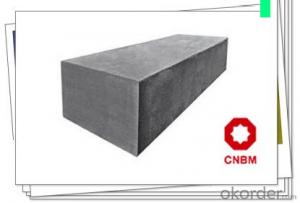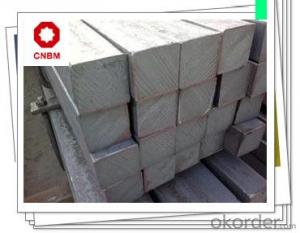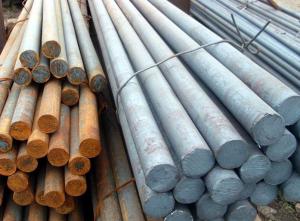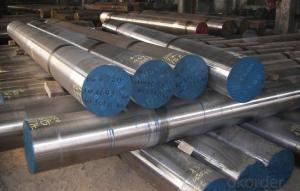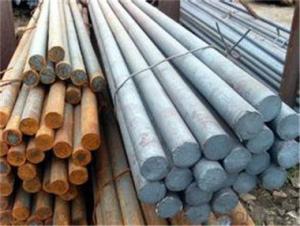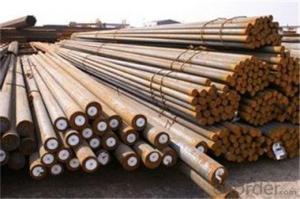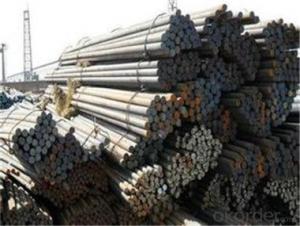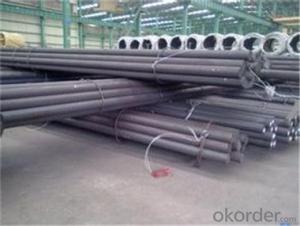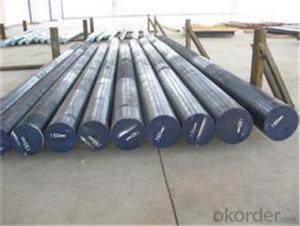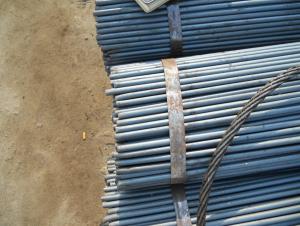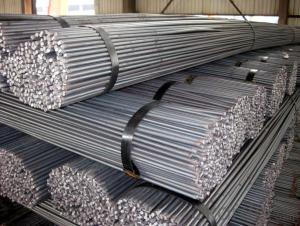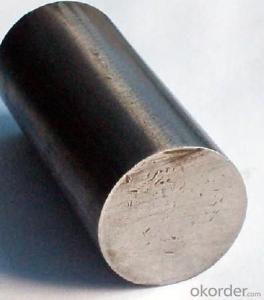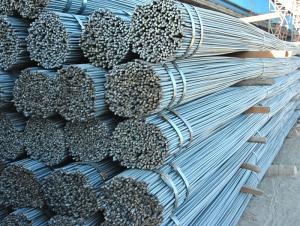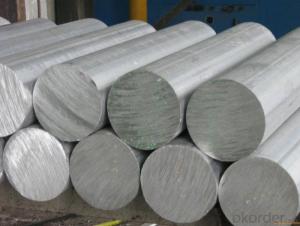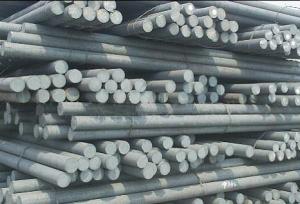Hard Chrome Carbon Steel Round Bar in China
- Loading Port:
- Tianjin
- Payment Terms:
- TT OR LC
- Min Order Qty:
- 77 m.t.
- Supply Capability:
- 2000000 m.t./month
OKorder Service Pledge
OKorder Financial Service
You Might Also Like
Description of steel round bar:
1.Diameter 80 to 800 mm
2.Black or Bright surface
3.Annealed or Quenched and tempered provided
4.Cutting service provide
Festures of steel round bar:
Grade:300 Series
Certification:ISO, SGS, BV, RoHS, IBR
Standard:ASTM, AISI, GB, JIS, DIN
Technique:Cold Rolled
Surface Treatment:Bright
Packaging:Inner Packing:1PC/Plastic Bag
Delivery:According The Detail Quantity
Hot Finished:Tensile Strength 515 Mpa in
Cold Drawn:Tensile Strength 860 Mpa Min ( Dia<19.05mm)< span="">
Export Markets:Global
Specifications of steel round bar:
Description |
Carbon Steel Rod/Carbon Steel Bar,carbon steel rod,carbon steel shaft,mild steel bar, mild steel shaft,ms bar | |
Material | ASTM | 1005,1006,1008,1010,1011020,1025,1030,1035,1040,1045,1050,1055,1060,1065,1070,1080,1084, 1016,1022 |
DIN | Ck30,Ck35,Ck40,Ck45,Ck50, 30Mn4,40Mn4 | |
BS | 045M10,080M50 | |
Standard | ,A575,BS970,DIN1652,JIS G4051 | |
Section shape |
Round | |
Length |
As your required | |
Application | corrosion resistant. | |
Images of steel round bar:
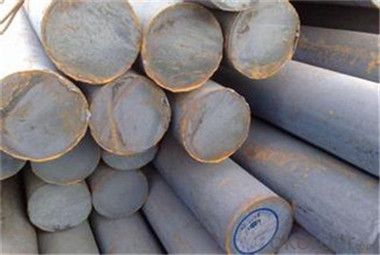
FAQ:
1. What is your package?
Packing situation: standard seaworthy packing or as customer required.
2. How long is the lead time?
Delivery time: 45 days after order confirmed.
3. What payment term do you accept?
Payment: T/T or L/C at sight.
- Q: What are the different joining methods for steel round bars?
- Different grammar and expressions: 1. Steel round bars can be joined in various ways, depending on the specific application and desired outcome. Welding, brazing, and mechanical joining are among the most common methods used for joining steel round bars. 2. Welding is a widely used technique for joining steel round bars. It involves melting the edges of the bars and fusing them together using heat. The choice of welding technique, such as arc welding, MIG welding, TIG welding, or spot welding, depends on the thickness and type of steel being joined. Welding creates a strong and permanent bond, making it suitable for heavy-duty applications. 3. Brazing is another method employed to join steel round bars. In this process, the bars are heated and a filler metal with a lower melting point than the steel is melted. The molten filler metal is then drawn into the joint by capillary action, resulting in a strong bond when it solidifies. Brazing is often preferred when the base metals have different melting points or when a lower-temperature joining process is required. 4. Mechanical joining techniques, on the other hand, do not involve any heat or melting of the steel round bars. Instead, they rely on mechanical means to hold the bars together. Examples of mechanical joining methods include bolted connections, riveting, and clamping. These techniques are typically used when disassembly or adjustability is necessary, as they provide a non-permanent joint that can be easily undone. When selecting a joining method for steel round bars, it is crucial to consider factors such as strength requirements, environmental conditions, and the specific application. Each method has its own advantages and limitations, and the most appropriate joining method should be chosen to ensure a secure and durable bond between the round bars.
- Q: What are the advantages of using titanium-alloy steel round bars?
- There are several advantages of using titanium-alloy steel round bars: 1. High strength: Titanium-alloy steel round bars have exceptional strength-to-weight ratio, making them ideal for applications where strength is crucial. Their high tensile strength allows them to withstand heavy loads and resist deformation. 2. Corrosion resistance: Titanium-alloy steel round bars exhibit excellent corrosion resistance, even in highly corrosive environments. This property makes them suitable for marine, aerospace, and chemical industries, where exposure to saltwater or chemicals is common. 3. Lightweight: Compared to other metal alloys, titanium-alloy steel round bars are relatively lightweight. This characteristic makes them advantageous in applications where weight reduction is important, such as in aerospace and automotive industries, as it allows for better fuel efficiency and increased payload capacity. 4. High temperature resistance: Titanium-alloy steel round bars can withstand high temperatures without losing their structural integrity. This property makes them suitable for applications in high-temperature environments, such as in power generation and oil and gas industries. 5. Biocompatibility: Titanium is a biocompatible material, meaning it is well-tolerated by the human body and does not cause adverse reactions. This makes titanium-alloy steel round bars suitable for medical implants, such as orthopedic implants and dental fixtures, where biocompatibility is critical. 6. Excellent fatigue resistance: Titanium-alloy steel round bars have exceptional fatigue resistance, which means they can withstand repeated loading and unloading without experiencing fatigue failure. This property makes them suitable for applications that require long-term durability and reliability, such as in structural components and machinery. Overall, the advantages of using titanium-alloy steel round bars lie in their high strength, corrosion resistance, lightweight nature, high temperature resistance, biocompatibility, and excellent fatigue resistance. These properties make them a versatile choice for various industries, ranging from aerospace and automotive to medical and petrochemical sectors.
- Q: What is the impact strength of a steel round bar?
- The ability of a steel round bar to withstand sudden forces or shocks without breaking or fracturing is referred to as its impact strength. This characteristic is a measure of the material's toughness and its ability to resist impact loads. Various factors, including the steel's composition, heat treatment, and any additional alloying elements, influence the impact strength of a steel round bar. To determine the impact strength, testing methods such as the Charpy or Izod impact test are typically employed. These tests involve striking a notched sample of the steel bar with a pendulum and measuring the amount of energy absorbed by the material before it fractures. The results are usually reported in terms of the energy absorbed in joules (J) or foot-pounds (ft-lb). The impact strength of a steel round bar can vary significantly depending on its grade or specification. Different grades of steel possess varying levels of toughness, making some more suitable for applications requiring high impact resistance, such as construction, automotive, or heavy machinery. On the other hand, certain grades may be better suited for less demanding applications. It should be noted that the impact strength is just one of several mechanical properties that must be considered when selecting a steel round bar for a specific application. Other factors, such as tensile strength, yield strength, hardness, and corrosion resistance, should also be taken into account to ensure the optimal performance and durability of the steel round bar in its intended use.
- Q: Is the shear wall concealed column stirrup steel or round steel?
- Now the shear walls, columns and stirrups are basically round steel bars, and their requirements are as follows: 6.5~12 mm in diameter steel bars, most of the reel into a disk; 12~40 mm in diameter, usually 6~12 meters long straight bar. I grade steel (Q235 steel) are rolling for smooth circular section, supply form of material, diameter of not more than 12mm, the length is 6m~12m.
- Q: What are the advantages of using nickel-molybdenum-vanadium alloy steel round bars?
- There are several advantages of using nickel-molybdenum-vanadium alloy steel round bars, including: 1. High strength and durability: Nickel-molybdenum-vanadium alloy steel round bars offer excellent strength and durability, making them suitable for applications that require a high level of structural integrity. This alloy steel is known for its ability to withstand heavy loads and resist deformation, making it ideal for use in industries such as construction, automotive, and aerospace. 2. Corrosion resistance: Another advantage of using nickel-molybdenum-vanadium alloy steel round bars is their excellent resistance to corrosion. The addition of nickel and vanadium to the alloy enhances its ability to resist oxidation and corrosion, even in harsh environmental conditions. This makes it a preferred choice for applications where exposure to moisture, chemicals, or corrosive substances is expected. 3. Heat resistance: Nickel-molybdenum-vanadium alloy steel round bars have a high heat resistance, making them suitable for applications that involve high temperatures. The presence of molybdenum in the alloy increases its resistance to thermal stress, ensuring that it remains structurally stable even at elevated temperatures. This makes it ideal for use in industries such as oil and gas, power generation, and heat exchangers. 4. Versatility: The versatility of nickel-molybdenum-vanadium alloy steel round bars is another advantage. This alloy can be easily forged, machined, and welded, allowing for a wide range of manufacturing processes. Its versatility makes it a preferred choice for applications that require complex shapes and designs, such as shafts, gears, and valves. 5. Cost-effective: Despite its numerous advantages, nickel-molybdenum-vanadium alloy steel round bars are relatively cost-effective compared to other high-performance alloys. Its excellent combination of properties makes it a cost-efficient option for various industries, as it offers a longer lifespan, reduced maintenance requirements, and improved performance, ultimately resulting in cost savings over time. In conclusion, the advantages of using nickel-molybdenum-vanadium alloy steel round bars include high strength and durability, corrosion resistance, heat resistance, versatility, and cost-effectiveness. These properties make it a preferred choice for a wide range of applications in various industries.
- Q: How do you identify the grade of a steel round bar?
- There are several ways to determine the grade of a steel round bar. First, examining the markings or labels on the bar itself can provide valuable information. Manufacturers often imprint or etch the grade directly onto the bar's surface. These markings usually include details like the grade designation (e.g., 304, 316, 4140), which represents the specific alloy composition, and may also include additional information such as the heat or lot number. Another method involves consulting the mill test certificate (MTC) that comes with the steel round bar. The MTC provides extensive information about the composition, mechanical properties, and other relevant specifications of the material. Typically, the steel mill or supplier issues the MTC, and it can be requested at the time of purchase. Additionally, the grade of a steel round bar can be determined through visual inspection and physical testing. Visual inspection entails examining the bar's appearance, texture, and color. Different grades of steel exhibit distinct characteristics, such as a glossy or matte finish, specific surface treatments, or variations in color due to varying alloying elements. Physical testing methods, such as tensile or hardness testing, can further confirm the steel grade. These tests measure the material's mechanical properties, including its strength, ductility, and hardness. By comparing the test results with established standards and specifications for different steel grades, it is possible to identify the grade of the round bar. In conclusion, to ascertain the grade of a steel round bar, one can inspect the markings, refer to the mill test certificate, visually assess the bar, and conduct physical tests to evaluate its mechanical properties.
- Q: Are steel round bars available in different surface finishes?
- Different surface finishes are available for steel round bars. The surface finish of a steel round bar pertains to the surface treatment or coating that is applied to it. This treatment serves to enhance its appearance, protect it from corrosion, or improve its performance for specific uses. Steel round bars can be found with various surface finishes such as polished, brushed, mill finish, galvanized, or coated with materials like chrome, nickel, or zinc. These diverse surface finishes cater to different needs and preferences in terms of aesthetics, corrosion resistance, and functionality across various industries and applications.
- Q: The problem of dowel bars on concrete pavements?
- The left and right half of the casting, the middle of the set is a longitudinal pull rod, tie rod settings and your panel thickness and plate width, length of the boardTo Portland cement concrete surface layer as an example: when the plate is 3M, the thickness of the surface layer is 200-250mm, the rod Phi 14 * 700mm * 900mm rebar length and spacing from the lateral transverse joint distance not less than 10mm (mean distance is a piece of plate length is 4 meters to the two plates the net is not small 100mm).
- Q: What are the advantages of using carbon steel round bars?
- There are several advantages to using carbon steel round bars in various applications. Firstly, carbon steel round bars are known for their high strength and durability. They have a high tensile strength, making them suitable for heavy-duty applications that require withstanding significant loads and pressures. This makes carbon steel round bars ideal for use in construction, manufacturing, and engineering industries. Another advantage of carbon steel round bars is their excellent machinability. They can be easily cut, drilled, and shaped into various forms, making them versatile for different projects. This also allows for precise and accurate fabrication, ensuring that the desired specifications and dimensions are achieved. Carbon steel round bars also offer good weldability, which means they can be easily joined together using various welding techniques. This makes them a preferred choice in the construction of structures and machinery that require strong and secure connections. Additionally, carbon steel round bars are relatively cost-effective compared to other materials with similar properties. They offer an excellent balance between performance and affordability, making them a popular choice for many applications. Moreover, they have a long lifespan and require minimal maintenance, resulting in cost savings over time. Carbon steel round bars are also highly resistant to corrosion and wear. This is due to the presence of carbon and other alloying elements, which enhance their resistance to external factors such as moisture, chemicals, and abrasion. As a result, carbon steel round bars can withstand harsh environments and prolonged exposure to various elements, making them suitable for outdoor applications. Lastly, carbon steel round bars are readily available in the market due to their widespread use and popularity. They are available in various sizes, grades, and specifications, allowing users to select the most suitable option for their specific needs. This availability ensures ease of sourcing and reduces lead times for projects. In conclusion, the advantages of using carbon steel round bars include their high strength, excellent machinability, good weldability, affordability, corrosion resistance, and availability. These qualities make carbon steel round bars a reliable and versatile choice for a wide range of applications in different industries.
- Q: Can steel round bars be used for drive shaft applications?
- Drive shaft applications can indeed utilize steel round bars. These drive shafts play a crucial role in transferring torque and rotational motion from the engine to the wheels or other components found in a range of mechanical systems, such as cars, industrial machinery, and even boats. Steel round bars possess exceptional mechanical properties that are vital for withstanding the stresses and loads experienced during operation. These properties include high strength, durability, and toughness. Additionally, they display good fatigue resistance, enabling them to withstand repeated loading cycles without succumbing to failure. Moreover, steel round bars can be accurately machined to meet the required dimensions and tolerances for drive shaft applications. They can also be subjected to heat treatment to enhance their strength and hardness, or surface treatment to improve corrosion resistance, if necessary. In conclusion, steel round bars are a favored choice for drive shaft applications due to their combination of strength, durability, and machinability. This makes them highly suitable for efficiently and reliably transmitting power in various mechanical systems.
Send your message to us
Hard Chrome Carbon Steel Round Bar in China
- Loading Port:
- Tianjin
- Payment Terms:
- TT OR LC
- Min Order Qty:
- 77 m.t.
- Supply Capability:
- 2000000 m.t./month
OKorder Service Pledge
OKorder Financial Service
Similar products
Hot products
Hot Searches
Related keywords
